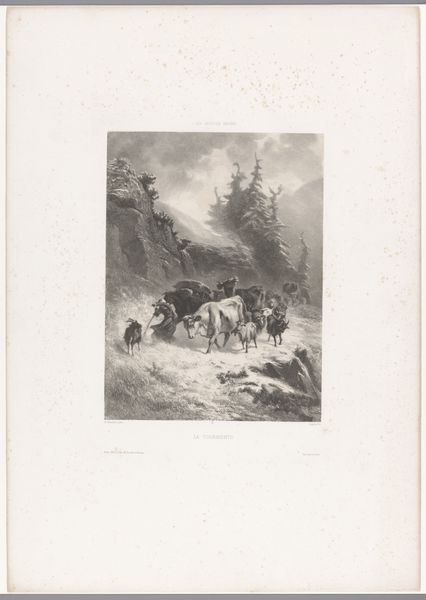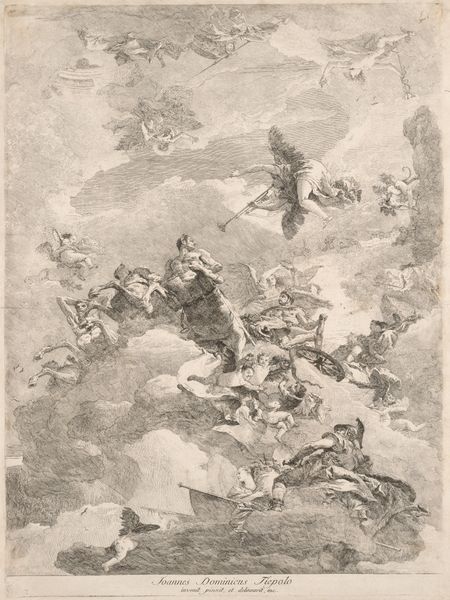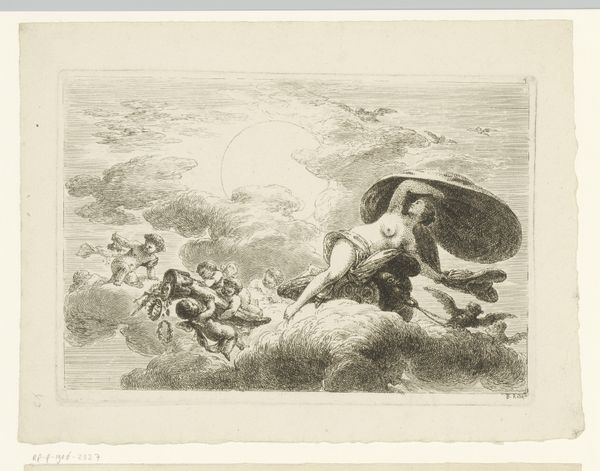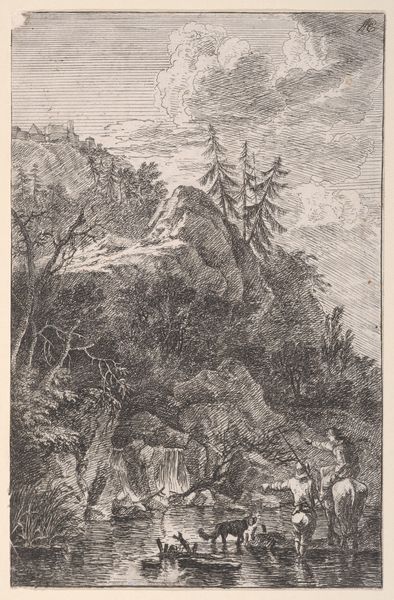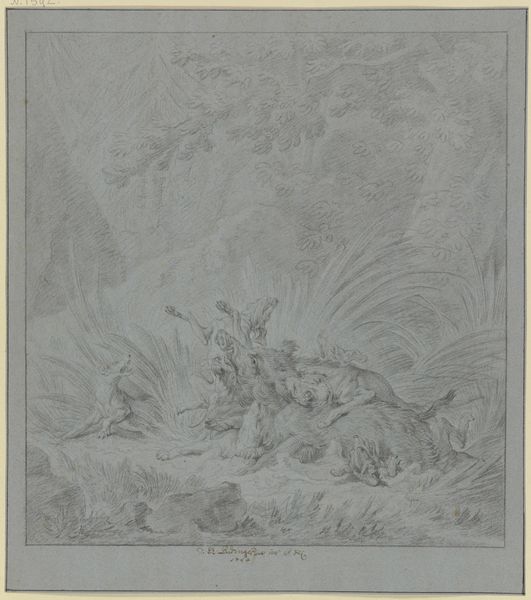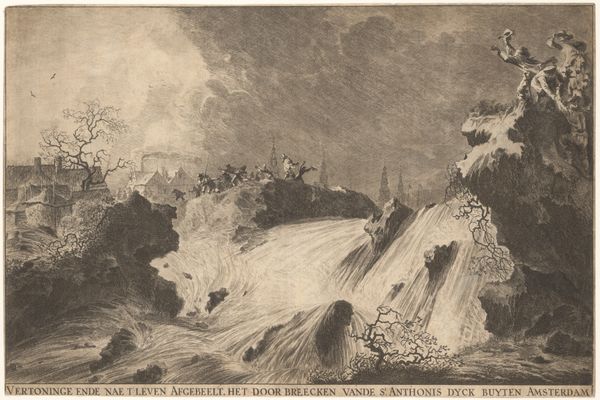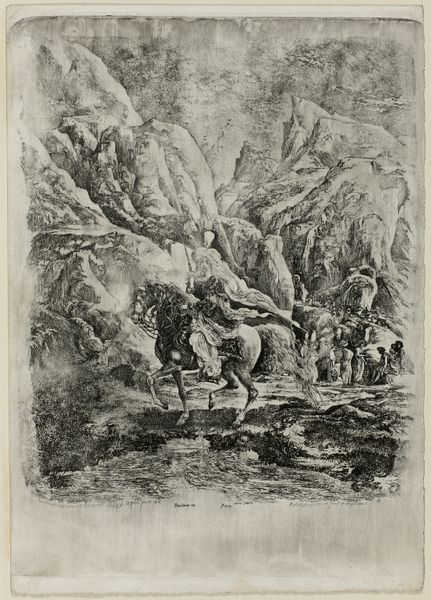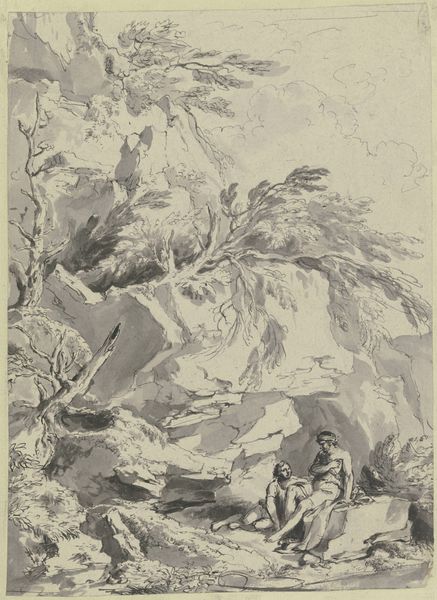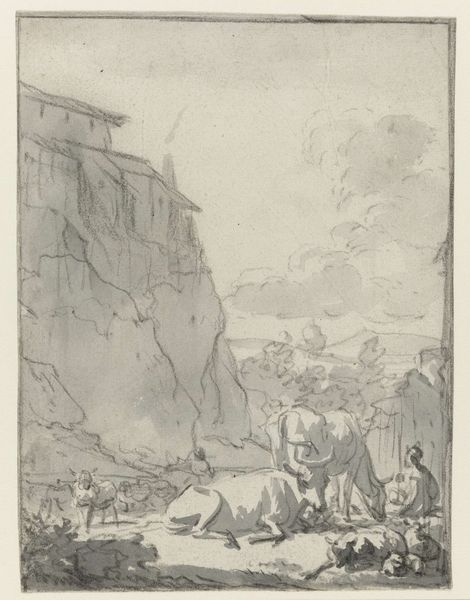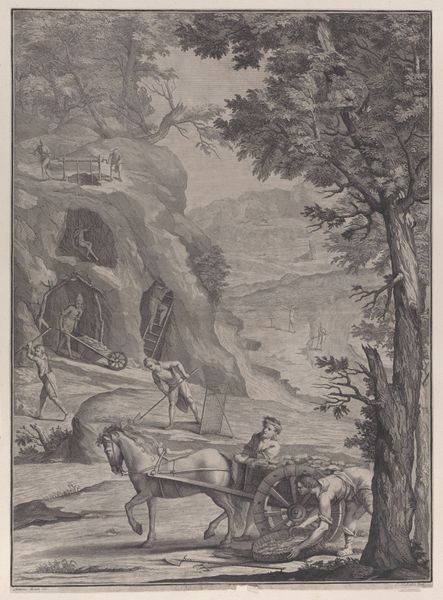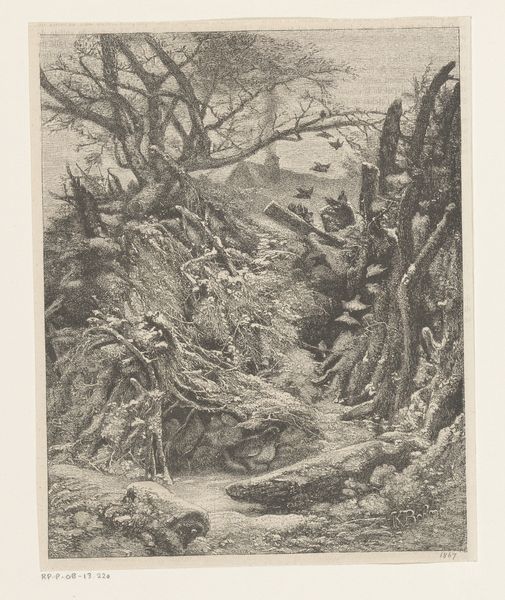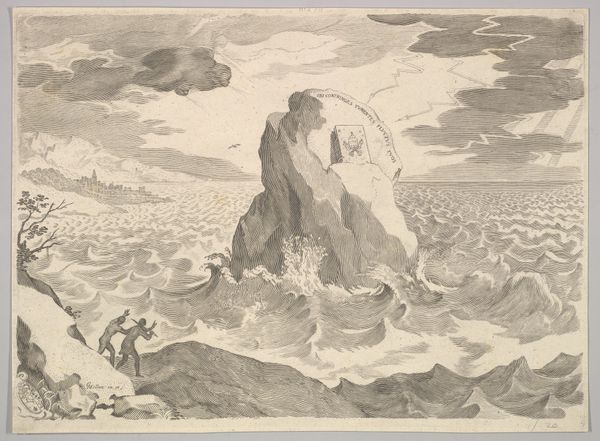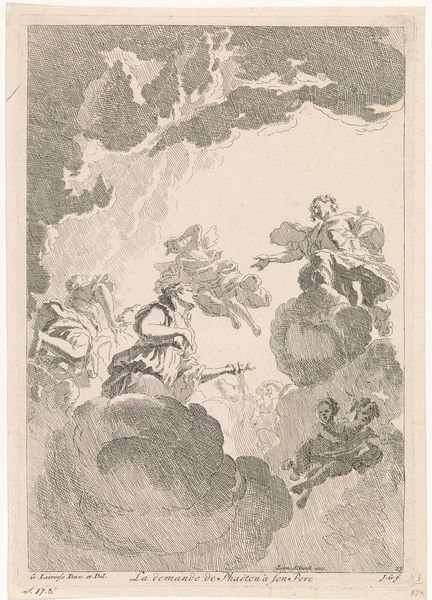
Dimensions: 267 mm (height) x 214 mm (width) (bladmaal)
Curator: A very bleak yet compelling scene before us. C.A. Lorentzen's pencil drawing, "Klippekyst med figurer i storm," or "Rocky Coast with Figures in a Storm," believed to be made between 1746 and 1828. It’s held here at the SMK. What are your initial thoughts? Editor: My gut reaction? This feels…oppressive. There’s a weight to the storm rendered only in pencil. The waves look almost solid, bearing down. Curator: Note how Lorentzen utilizes pencil – a medium typically associated with studies, preparatory sketches – to express such intense emotion. He’s showing figures tossed about; there is almost biblical panic rendered on a very domestic scale. Editor: Exactly! It's interesting that he chooses such an unassuming medium to depict, possibly, divine fury. What could this symbolism mean for him as an artist or society during its time? Curator: Consider the symbolic implications. Water is commonly tied to chaos and the sublime, and the struggle of the tiny figures against this immensity. What could the iconographic link between vulnerability and environmental terror point towards? Editor: To me, this draws parallels between natural disaster and sociopolitical turmoil, the way structures crumble and communities scatter. Are the figures simply fleeing the storm, or also a metaphorical tempest of that era? Were revolutions brewing even then? The details—the desperate grip on horses, the windswept clothing— speaks to collective anxiety during Lorentzen's life. Curator: The landscape dominates—it feels Romantic, doesn't it? With its depiction of nature as all-powerful, uncaring about human suffering. Note the scale; it invites contemplation of human insignificance when faced with such natural forces. This feeling grew stronger towards the late 1700s and beyond. Editor: Absolutely. Lorentzen provides a stark pre-industrial warning—humankind’s helplessness. We’ve seen so much change regarding ecological balance and climate change. The pencil seems so gentle compared to the raw truth portrayed. Curator: Perhaps Lorentzen speaks to us across the centuries with particular force now; in viewing images, we’ve now inherited both an artistic lineage and a moral imperative. Editor: Agreed. A poignant testament in simple lines about universal fragility, then and now.
Comments
No comments
Be the first to comment and join the conversation on the ultimate creative platform.
